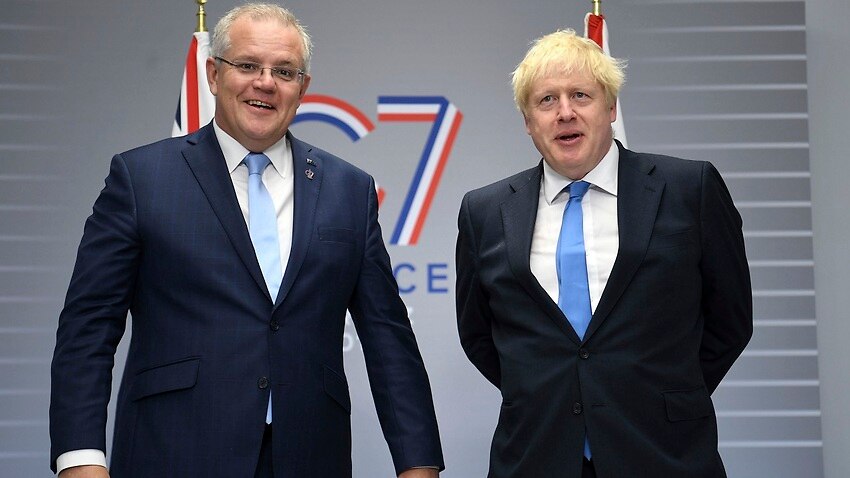Boris Johnson
The UK is one of the countries who signed the Paris Agreement in 2015, where nations make an effort to combat climate change and keep global warming under 2 degrees celsius. The country has also passed the Climate Change Act 2008 with an aim to minimise carbon emissions by 2050.
When running in the 2019 General Election, one pledge among the Conservatives’ priorities was tackling climate change and for the country to be Net Zero by 2050. This means that the UK would counterbalance any carbon emissions with climate-friendly solutions, like increasing renewable energy use and planting trees.
However, the current Prime Minister has not always upheld his position to end climate change. His campaigns for the Conservative Party have received multiple donations from the Global Warming Policy Foundation, which contests global warming and its policies. Furthermore, in his articles for The Telegraph, the PM doubted the effects of climate change and supported the ideas of Piers Corbyn, brother of Jeremy Corbyn and a denier of global warming.
One controversy that came up when running for PM, was his absence from the Channel 4’s Climate Debate as his podium was replaced by a melting ice sculpture. This attracted much criticism as Channel 4 defended its actions explaining it wanted to highlight the climate emergency and not mock the conservatives, while the Tories claimed the broadcaster demonstrated partisan bias.
The Prime Minister’s commitment to reduce climate change has been more prominent in the last few years, particularly when he presented his Green Industrial Revolution plan. This outlined the UK’s plan to rely more on renewable energy alternatives, such as wind power, electric vehicles and hydrogen production; while developing new technologies and creating over 200,000 jobs.
In a speech at the Climate Ambition Summit, Boris Johnson also reiterated his promise for the country as carbon dioxide emissions have fallen more than 40% since 1990 while promoting more ‘green’ ways of living, such as the ‘cycle to work’ scheme, solar programmes and various uses of hydrogen for public housing.
Scott Morrison
According to Parliament Australia’s website, the country has produced more than 500 million tonnes of emissions and their 2030 target to reduce them ‘may prove challenging’. However, the government is working to resolve this through its Emissions Reduction Fund (ERF) which focuses on producing ‘green’ technologies, offshore renewable energy initiatives and agriculture businesses to make more environmentally friendly choices.
Scott Morrison became Prime Minister in Australia in 2018 and represents the Liberal Party of Australia (right), who stands opposite to the Australian Labor Party (left). The Liberal Party is committed to protecting the environment through the $3.5 billion Climate Solutions Package which invests in more eco-friendly sources of energy. Thanks to the government emissions are now 12% lower in comparison to 2005’s levels.
Australia is part of the Kyoto Protocol and the Paris Agreement, committed to reducing greenhouse emissions, and the PM has said their environmental commitments will be met easily by 2030. However, Guardian Australia has interviewed economy and science experts to ask them what they think about these promises to reduce Australia’s impact on the planet and the majority said they couldn’t be delivered unless new policies were approved.
According to the Climate Action Tracker, an independent thinktank that tracks countries’ efforts to respect the Paris Agreement, Australia’s journey and policies are “insufficient”. The website says the government is not doing enough to limit its global warming impact, as it still relies heavily on the coal industry. However, Morrison still pledges that the country will meet its promises and would do more to achieve its targets thanks to the development of new technologies.
Vladimir Putin
Russia is the fourth-highest country in the world for carbon emissions and, as part of its commitment to limit climate change, it’s part of the Paris Agreement and recently outlined its Energy Strategy 2035 plan to consider alternative energy sources and technologies from traditional ones. Russia is however experiencing various environmental consequences due to global warming, like wildfires in the Siberian forest and record-breaking warm winters.
This doesn’t mean that it hasn’t made any progress: since 1990 and the fall of the Soviet Union, Russia’s emissions decreased significantly and the vast presence of forest in the country means that many of the country’s emissions will be automatically absorbed by its trees.
Vladimir Putin, the president of the Russian Federation, doubted the origins of global warming are man-made while highlighting the important role the universe plays in this. At the United Nations summit in 2019, he also claimed that not everybody shared Greta Thunberg’s “enthusiasm” and that she didn’t realise “the modern world is complicated and complex” and not everyone, especially those in developing countries, can access renewable energy sources.
Putin however, still acted on climate change and planned that emissions would need to be 30% lower by 2030 than the levels in 1990. Climate activists were disappointed by this as the current emissions levels are half (52%) than those in 1990, so it would actually allow the country’s emissions to rise rather than decrease.
Ella, Kerisa, Isabelle, Alex
News Editors, The Gryphon (formerly Leeds Students)
Featured Image Source: SBS News

